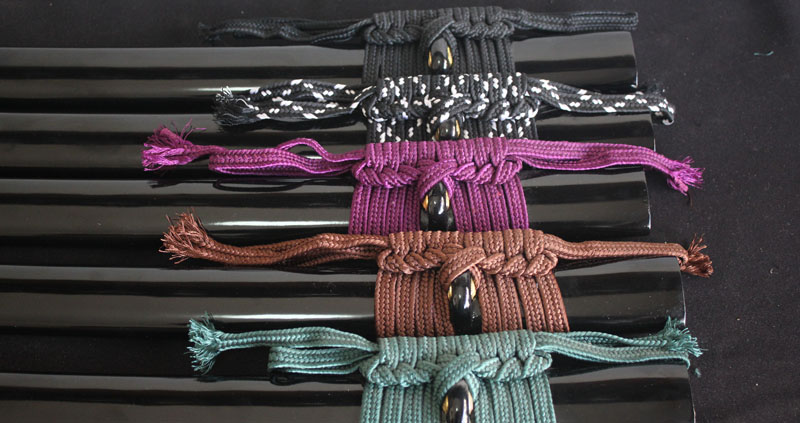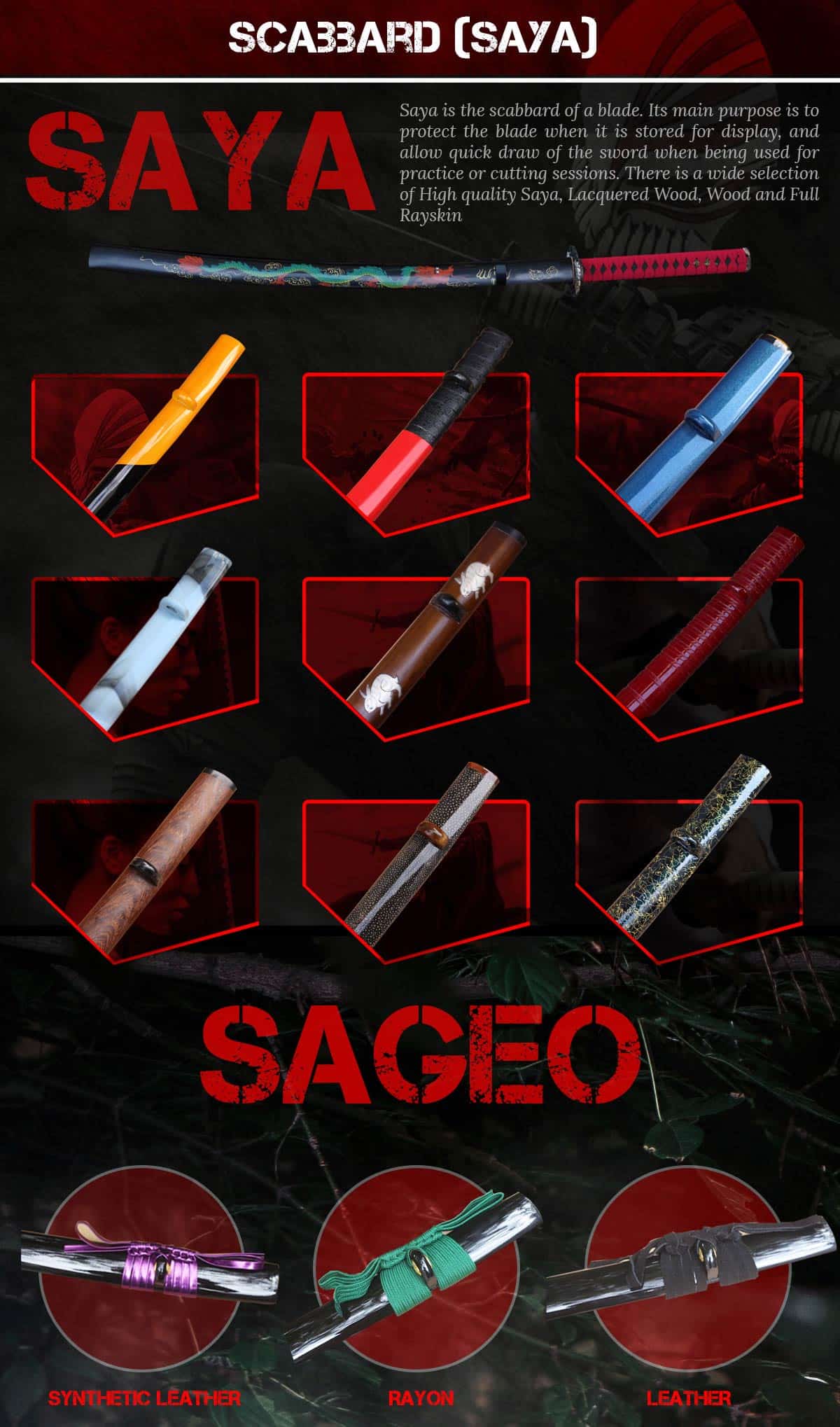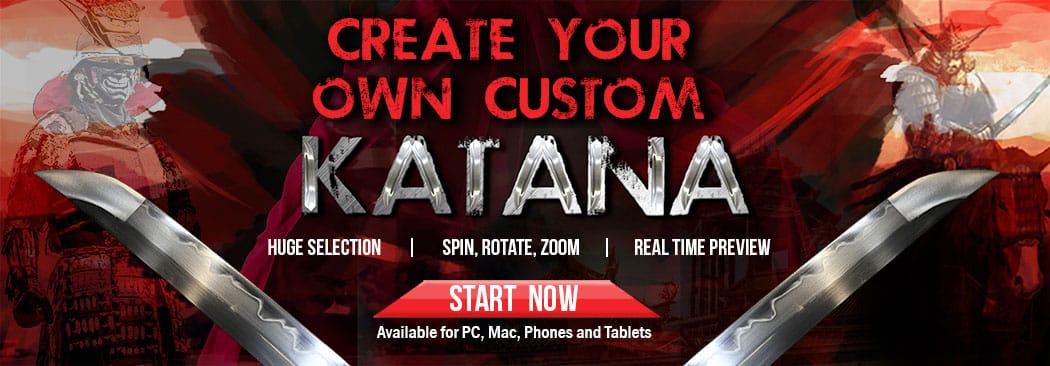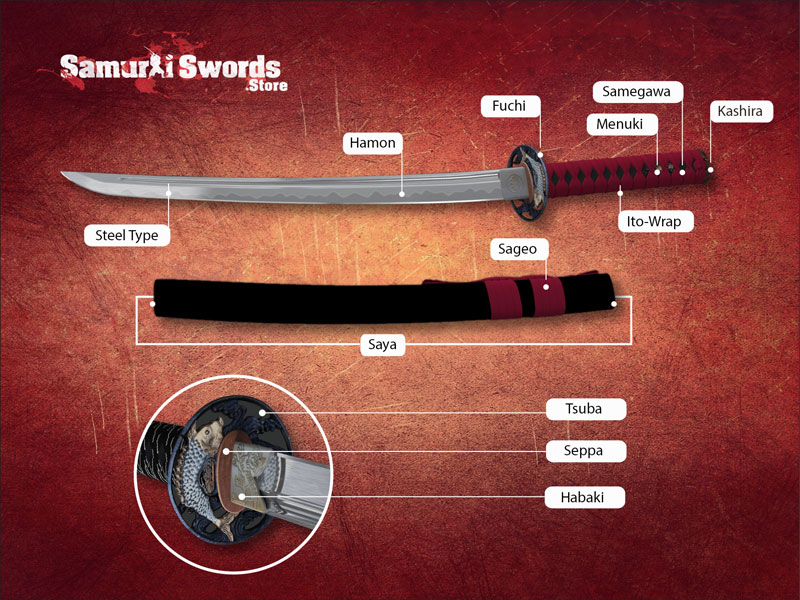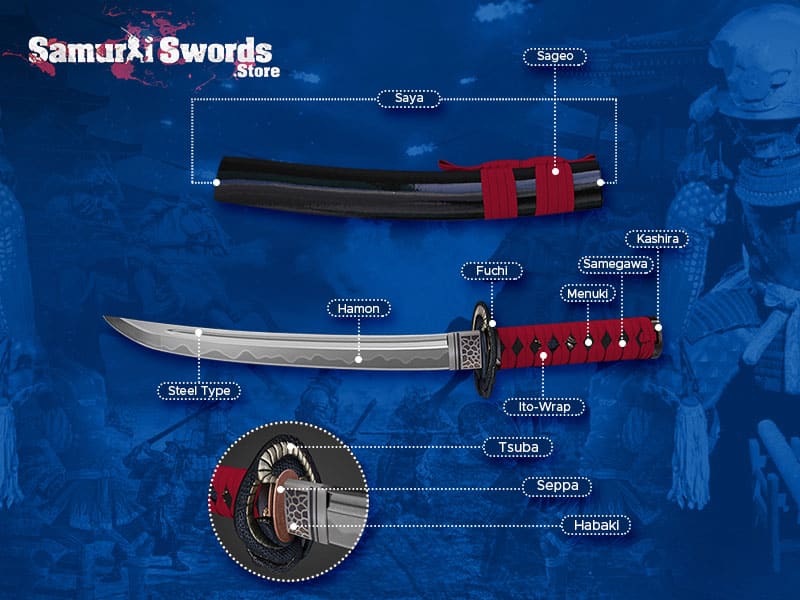Katana Parts
Sageo
Sageo – Different Ways to Tie a Sageo
Before learning the process of tying a Sageo or the braided cord that extends from the Kurikata knob onto the saya it would be better to get to know what Katana Sageo is. Normally it is a cord that either made of silk, rayon, cotton or leather.
Sometimes other materials can be used to produce it. However, these are the traditional materials commonly use. There are different patterns use to make this braided cord.
Among the available patterns using Kakucho to create a functional Sageo is better These are resistant to wear and aesthetically beautiful. The style of creating a thing of beauty is handed down from generation to generation.
The patterns used long ago to produce works of art are maintained. Shigeuchi style frays quickly. In the past, stories were told about the importance of using certain colors, etc. to denote rank however, today this is no longer given importance.
During the Tokugawa era, the color of choice for Katana Sageo was black. The general rule is to match the Sageo color with the Tsuka-Ito or handle wrap.
However, for formal occasions wearing a Sageo that matches the colors of one’s dojo is recommended especially for those who are into certain schools of martial art.
Techniques in Tying a Katana Sageo
There are numerous techniques used in tying this braided cord on the Saya depending on the occasion.
- Cho Musubi – is also known as the Butterfly knot
- Daimyo Musubi
- Myoga Musubi – This is used for Tanto. This style is said to save time for the owner
- Ronin Musubi – is also known as Masterless Samurai or Swordsman Knot. This is a decorative type of braided cord. Some say that this is commonly used for display purposes only however, it is still debatable whether this can damage the Sageo in the process
- Taicho Musubi
Some schools are known for dismissing the importance of Katana Sageo or even fail to prescribe their importance within their Ryu. Sageo can be considered a spiritual cord that binds the Samurai to his sword.
Respecting the process of how to correctly do the braiding is one of the tools of the trade that a Samurai must learn. Everyday objects must be regarded to have spiritual significance.
In Japan, there is even a festival held to celebrate and appreciate broken needles and pins. There are actually practical considerations for the Sageo. This is used during low light or no light confrontations.
One of the methods used for tying the Katana edge downwards like those on a Tachi using this braided cord secures the Katana as it is worn by the Samurai.
There are seven braided cord rope tying techniques described by experts and these are referred to as Bansensukai or Sageo Rikata Shichi No Jutsu. Some techniques help to secure the Saya while warriors climb the wall during attacks.
Some even teach how to secure the sword to prevent it from being stolen. This is referred to as Tabimakura no Ho or travel pillow way. Even prisoners can be secured using the same techniques seen in these braided cords.


